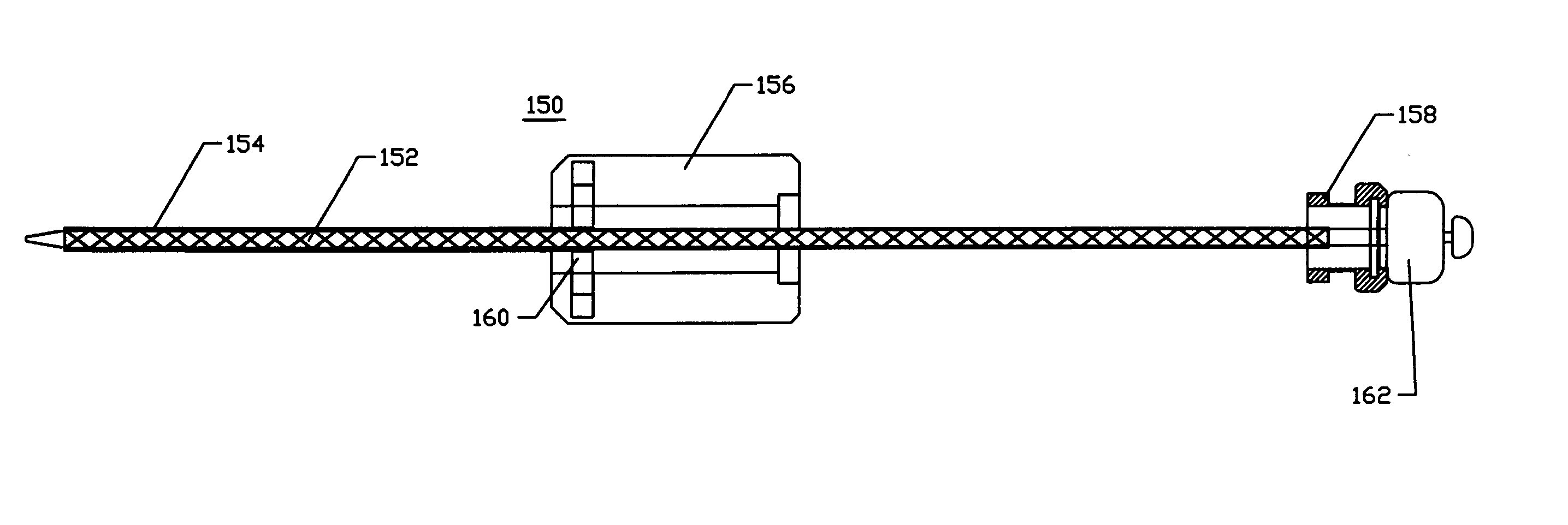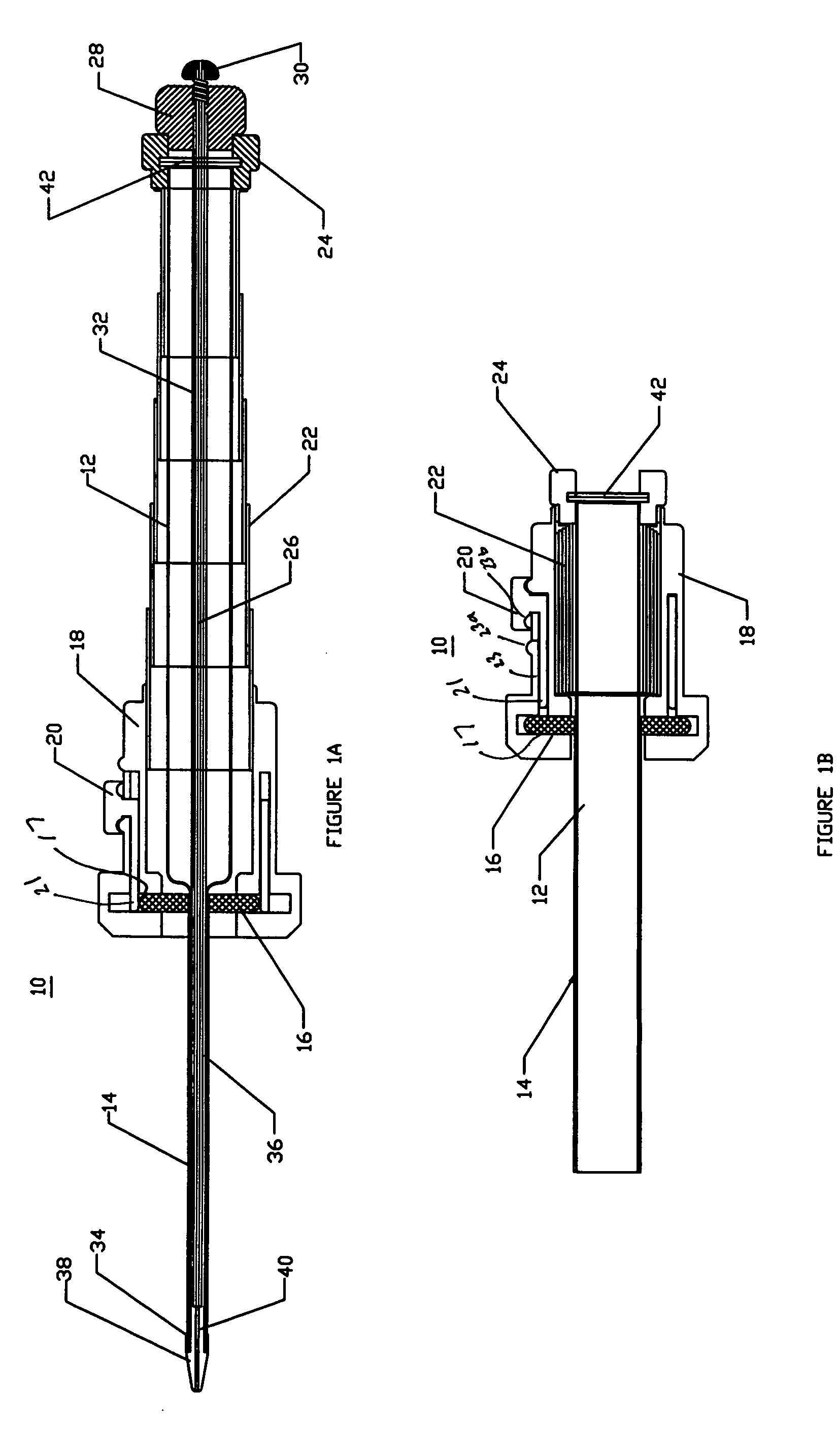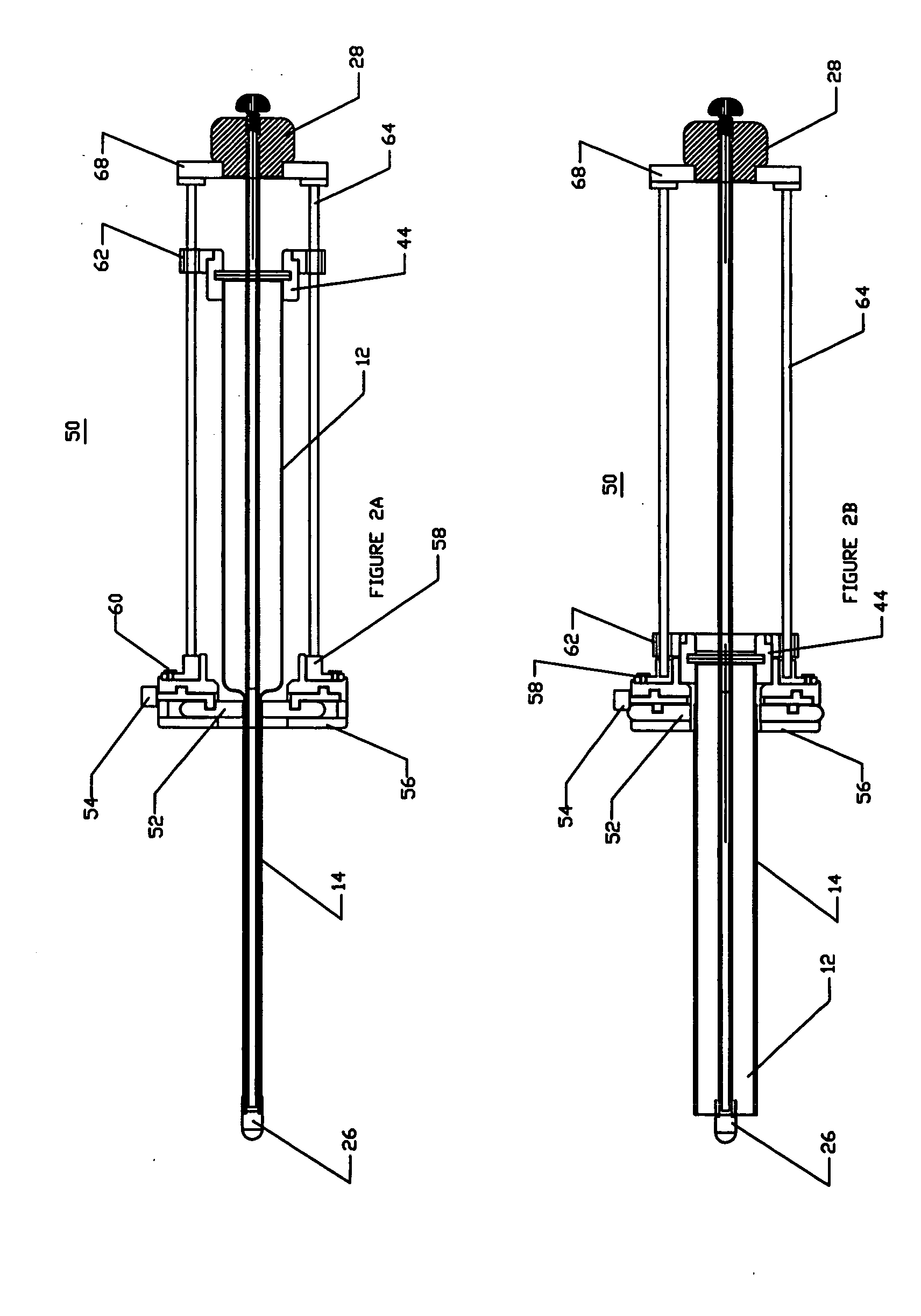Medical access sheath
a technology for access sheaths and medical devices, applied in the field of medical devices and techniques, can solve the problems of difficulty in placing the distal end of the sheath, and achieve the effects of preventing fluid migration, reducing size, and facilitating removal
- Summary
- Abstract
- Description
- Claims
- Application Information
AI Technical Summary
Benefits of technology
Problems solved by technology
Method used
Image
Examples
Embodiment Construction
[0053] In the embodiments described herein, reference will be bade to a catheter or a sheath. A catheter or sheath can generally be described as being an axially elongate hollow tubular structure having a proximal end and a distal end. The axially elongate structure further has a longitudinal axis and has an internal through lumen that extends from the proximal end to the distal end for the passage of instruments, implants, fluids, tissue, or other materials. The axially elongate hollow tubular structure can be rigid or it can be generally flexible and capable of bending, to a greater or lesser degree, through one or more arcs in one or more directions perpendicular to the main longitudinal axis.
[0054] As is commonly used in the art of medical devices, the proximal end of the device is that end that is closest to the user, typically a surgeon or interventionalist. The distal end of the device is that end closest to the patient or that is first inserted into the patient. A direction...
PUM
 Login to View More
Login to View More Abstract
Description
Claims
Application Information
 Login to View More
Login to View More - R&D
- Intellectual Property
- Life Sciences
- Materials
- Tech Scout
- Unparalleled Data Quality
- Higher Quality Content
- 60% Fewer Hallucinations
Browse by: Latest US Patents, China's latest patents, Technical Efficacy Thesaurus, Application Domain, Technology Topic, Popular Technical Reports.
© 2025 PatSnap. All rights reserved.Legal|Privacy policy|Modern Slavery Act Transparency Statement|Sitemap|About US| Contact US: help@patsnap.com



